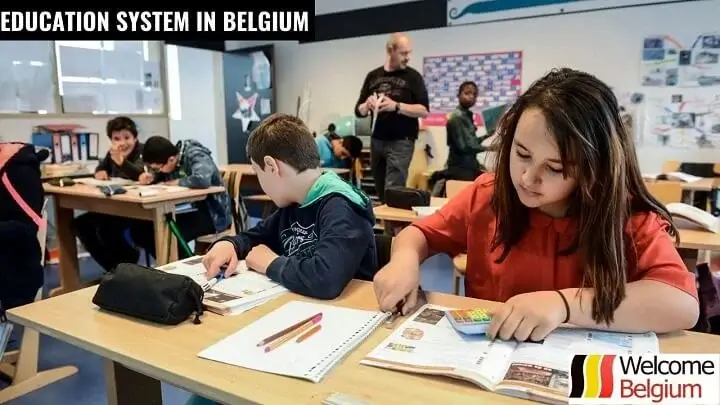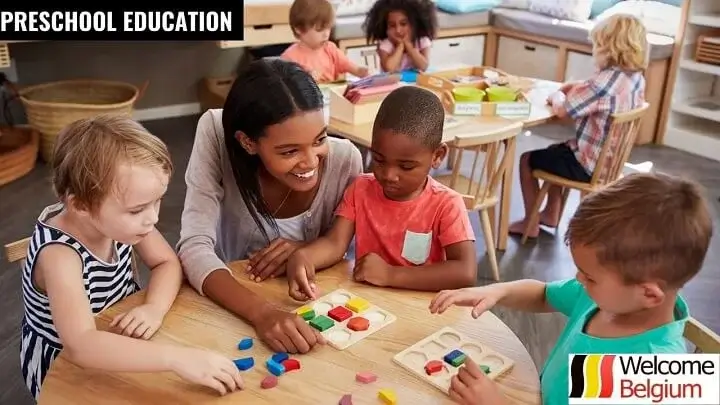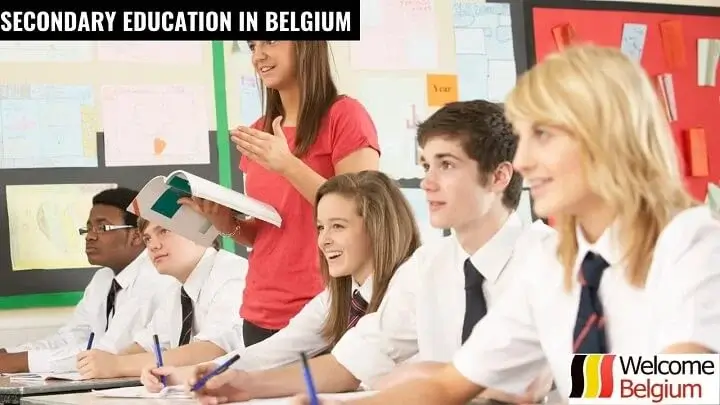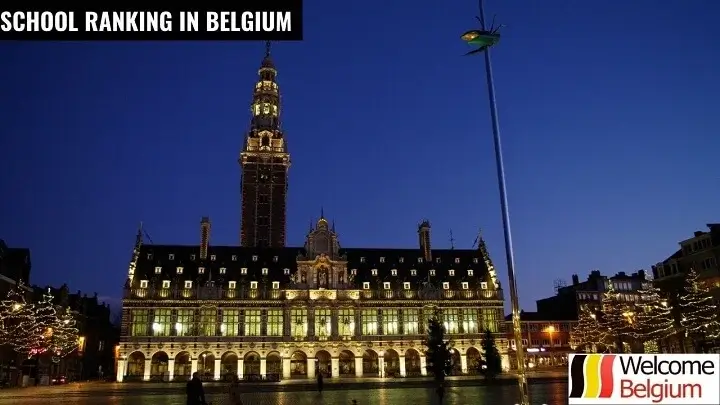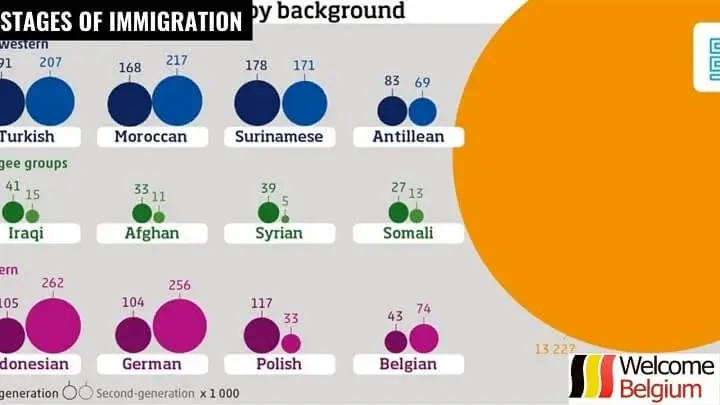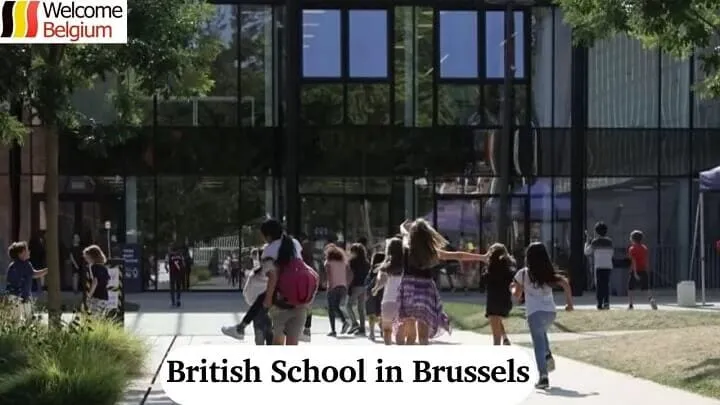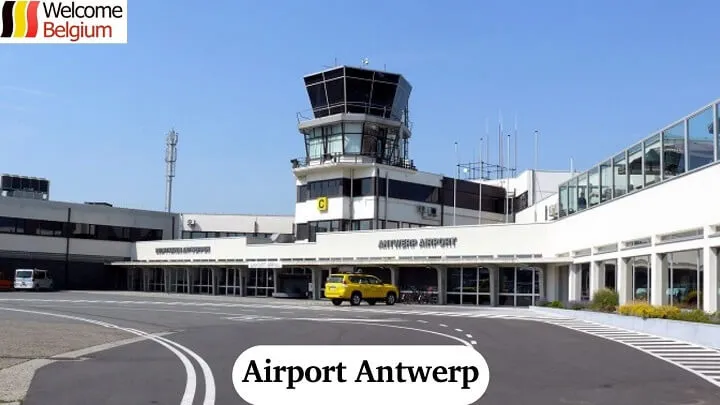Schools in Belgium follow their own system, divided by language communities and with different teaching methods depending on the region. For immigrant families with children, everything might seem confusing at first. But once you understand the basic steps and rules, it becomes manageable — from kindergarten to final exams.
Education System in Belgium
The Belgian education system is divided into several stages: preschool, primary, secondary, and higher education. The structure aims to provide continuous learning for children and teenagers from an early age until they obtain their diploma. Compulsory education starts at six years old and continues until eighteen. However, children can attend kindergarten from two and a half years old.
Want to study subjects in Belgium in English? Read about British schools in Belgium.
The country is divided into three linguistic communities, each organizing its own education: Flemish, French, and German-speaking. This means that curricula, language of instruction, and assessment systems may vary by region. For example, Flemish schools are managed by Flanders, French-speaking schools by Wallonia and Brussels, and German-speaking schools by Eastern Belgium.
Characteristics of Belgian School Education:
- Compulsory education lasts from 6 to 18 years old. This includes primary and secondary school. Even if a teenager chooses to work after 15, they must still attend school at least partially.
- Preschool education starts at 2.5 years old. It is not mandatory, but almost all children begin kindergarten at this age. Kindergartens are attached to schools and education there is free.
- The school system is divided by linguistic communities. Belgium has three such communities: Flemish, French-speaking, and German-speaking. Each is responsible for its own schools, curricula, and standards.
- Primary school lasts 6 years. Education begins at 6 and ends at 12. The main focus is on mathematics, reading, writing, languages, and environmental studies.
- Secondary education is divided into three cycles. The first cycle runs from 12 to 14 years, the second from 14 to 16, and the third from 16 to 18. In the later stages, students choose a direction: general, technical, artistic, or vocational.
- The system is not centralized. Education ministries in different communities develop their own curricula, standards, and exams. This is important to consider when relocating.
- Instruction is conducted in the community’s language. In Flemish schools, teaching is in Dutch; in Walloon schools, in French; in Eastern Belgian schools, in German. Brussels schools offer both French and Dutch options.
- The second language starts from primary school. Usually, Flemish schools begin teaching French as a second language, while French-speaking schools teach Dutch. German-speaking schools teach both languages.
- Grading can vary by region. Some schools use letter grades, others use numerical scales from 1 to 10 or 1 to 20. It’s important to understand how it works in your area.
- Moving from one grade to another is not automatic. If a child hasn’t mastered the curriculum, they might repeat the year. This happens more often than in other countries, especially in secondary school.
- Education is free, but there are hidden costs. Schools do not charge tuition, but parents must buy notebooks, stationery, pay for meals, trips, and after-school programs.
- After-school care is often available. This service is paid and offered both before and after classes, which is convenient for working parents.
- There are religious and secular schools. Some schools follow Catholic traditions, others are neutral or liberal. It is important to find out beforehand which approach suits you and your child.
- Changing schools is possible but requires preparation. Moving to another region or community may cause difficulties with language, curriculum, and adaptation. This is especially important for immigrant families.
- Schools pay attention to social integration. Preparatory classes or special language support programs exist for children who do not speak the language of instruction.
- There is no unified final exam after secondary school. A diploma is issued based on the final grades given by the school. However, university admission may require additional entrance exams.
This approach allows adaptation of the system to local characteristics and cultural context but can cause difficulties for immigrant parents when choosing a school. It’s important to know which linguistic community you belong to, as it directly affects the curriculum and language of instruction.
Tip:
Before choosing a school, check which linguistic community it belongs to—this will affect the language of instruction and curriculum.
Assessment and Academic Performance in Belgian Schools
Assessment in Belgian schools follows a comprehensive approach that includes written tests, quizzes, and oral answers. Teachers use different methods to understand how well a student has absorbed the material. In primary school, the focus is on regular small knowledge checks, while in secondary and high school, there are more serious exams and projects. This helps identify each student’s strengths and weaknesses and support their learning.
For example, in Flanders, standardized tests are widely used to compare student results. In the French-speaking part of the country and the German-speaking community, methods tend to be more flexible, emphasizing critical thinking and creative skills development. In any case, grades matter not only for the current level of education but also for moving on to the next stage — from primary to secondary school, and then to higher grades.
The transition between levels is based on academic performance and final exams. If a student struggles with the curriculum, additional help may be provided, such as tutoring or sessions with a psychologist. In some cases, repeating a year is allowed so the child can catch up. The system focuses not only on control but also on supporting each student’s development to help them fully realize their abilities.
| Region | Grading Scale | Minimum Pass Mark | Minimum Mark to Move to Next Level | Notes |
| Flemish Region | 0–20 | 10 | Usually 12–13 from primary to secondary | Minimum pass is 10, but a slightly higher mark is needed to progress |
| Walloon Region | 0–20 | 10 | Usually 12–14 | Threshold depends on the school and program |
| German-speaking Region | 1–6 | 4 | Usually 4–5 | 4 is pass, 5 and 6 are considered good marks |
| International Schools | A-F (letter) | C or higher | Usually B or higher | Private schools may have stricter requirements |
In addition, schools have a system of ongoing feedback for parents, keeping them informed about their child’s successes and challenges. This helps jointly address learning and adaptation issues. Ultimately, the purpose of assessment is not just to give a grade but to motivate the student to progress and develop at a comfortable pace.
Example:
A friend told me that when their child started school in Belgium, they were surprised by the different grading systems and minimum scores required to move to the next grade — in Flanders, a minimum of 12 out of 20, in French-speaking schools — 13, and in German-speaking schools — 4 out of 6. This helped them better understand how to support their child’s learning.
In short, assessment in Belgium takes into account different methods and regional features, helps students adapt to requirements, and supports their growth at every stage of education.
Stages of Education
Education in Belgium is divided into several stages. From preschool to secondary level, the system is designed to gradually develop children’s knowledge and skills, taking into account their age and level of preparation. Understanding these stages helps parents better navigate the school system and support their children at every step.
Preschool Education (2.5–6 years)
In Belgium, preschool education is aimed at children from 2.5 to 6 years old and focuses on smooth preparation for school. The main goals are to develop social skills, teach children how to interact with others, and create a comfortable environment for their first learning experiences.
Preschool education in Belgium is not compulsory but highly recommended for successful adaptation to the school environment. Attending kindergarten helps children develop social skills, get used to routines, and prepare for primary school. Although parents can choose homeschooling or other options, preschool often eases the transition to formal education.
Features of preschool education in Belgium:
- Age and structure. Education starts at 2.5 years and continues until 6 years, divided into two cycles: early (2.5–4 years) and preparatory (4–6 years).
- Focus on socialization. Instead of formal lessons, there are games, creative activities, and peer interaction.
- No mandatory daytime nap. Unlike some countries, children are not required to nap during the day to adjust to school schedules.
- Options for children with special needs. Inclusive classes and additional support are provided.
- Language diversity. Preschool education is offered in one of the three official languages: Dutch, French, or German, depending on the region and family preferences.
Parents can choose between public and private kindergartens, considering convenience, language environment, and educational methods. When selecting a preschool, parents should pay attention to the language spoken, as schools operate in different languages depending on the region.
Learn about the features of schools in Ghent, Belgium in this article.
It is important to check the educational approach, the qualification level of caregivers, and the availability of programs for social and creative development. Also consider location convenience, schedule, and support for children with special needs. Personal recommendations and visits to several kindergartens can help make the best choice.
Interesting fact:
Over 90% of children in Belgium attend preschool institutions, making this stage almost mandatory for most families.
Primary Education (6–12 years)
Language learning plays a key role in primary school. Besides the native language, children start learning a second language — usually French, Flemish, or German, depending on the region where they live. This helps them adapt better to the multilingual environment and builds language skills from an early age. At this stage, children learn to read, write, count, and study the world around them, which supports their overall cognitive development.
The school year usually lasts about 10 months and includes three main holiday periods: summer, winter, and spring. The school day balances lessons, breaks, and extracurricular activities such as sports, music, and creative projects.
Key points of primary education:
- Core subjects: reading, writing, math, and environmental studies. Reading and writing develop communication and thinking skills. Math covers counting, logic, and simple problem solving. Environmental studies introduce basics of natural sciences, geography, and social studies to understand nature and society.
- Second language learning from early grades: depending on the region, children start learning a second official language of Belgium — French in Flanders, Flemish in French-speaking Wallonia, and French or Flemish in the German-speaking community. This enhances language flexibility and communication.
- The school year typically begins on the first Monday of September and ends by late June (approximately from September 1–7 to June 25–30).
- Holiday periods:
- Summer — about 8 weeks from early July to late August
- Christmas — about 2 weeks from late December (around Dec 24–25) to early January (around Jan 6–7)
- Spring (Easter) — about 2 weeks, usually mid-April (approx. April 10–15) to late April (around April 25)
- Autumn — about 1 week in late October to early November (usually the last week of October)
- Lesson duration ranges from 30 to 50 minutes depending on the subject and age.
- The school day typically includes 5–6 lessons with breaks and a lunch break.
- Classes usually start around 8:30–9:00 am.
Student progress is regularly assessed through tests, assignments, oral responses, and projects. Teachers monitor results closely to identify difficulties and provide support. Grades are usually given on a 20-point scale, with 10 and above considered a passing level.
Example:
In 2018, a student at a school in Antwerp was expelled due to poor academic performance and repeated failure to complete homework. Despite warnings and meetings with teachers, the situation did not improve. The student was eventually transferred to a specialized school for additional support.
If a student struggles for a long time without progress, the school may consider transferring them to a more suitable level or arranging extra lessons. In rare cases where support fails, expulsion may be considered. However, the school’s main goal is to support the child’s development, not just exclude them.
Middle Education (12–18 years)
Secondary education in Belgium is designed for teenagers aged 12 to 18 and is divided into three main tracks: general education, technical education, and vocational education. Each student chooses a study profile based on their interests and future plans. General education prepares students for university and focuses on in-depth academic subjects.
Technical education combines theory and practice, provides professional skills, and opens the way to middle-level specialized schools. Vocational education is aimed at direct entry into the workforce and includes internships and practical training.
Features of secondary education in Belgium:
- Education lasts from 12 to 18 years and is divided into three tracks: general, technical, and vocational.
- General education prepares students for university admission, emphasizing academic subjects.
- Technical education mixes theory with practice, preparing for work in specialized middle schools.
- Vocational education focuses on obtaining a profession and includes practical lessons and internships.
- The school year starts in early September and ends in late June, typically with 5-6 lessons a day, each lasting 50 minutes.
- The choice of study profile happens at the end of the first year of secondary school.
- Grades affect the possibility of moving to the next grade; low performance may lead to repeating the year or expulsion.
- Some schools allow changing the study profile during education, but this requires approval from administration.
- Secondary school includes compulsory subjects and profile-specific disciplines depending on the chosen track.
- Additional classes and extracurricular projects are possible for deeper study or skill development.
The school year in secondary school begins in early September and finishes at the end of June. Lessons usually last 50 minutes, with about 5-6 lessons per day including breaks. Students receive grades that affect promotion to the next academic year. If performance is insufficient or no progress is shown, the student may be asked to repeat the year or be expelled.
Learn more useful information about business schools in Belgium.
Profile selection usually takes place at the end of the first year of secondary school, after which the student studies subjects corresponding to the chosen track. It is important to understand that the right choice influences opportunities for further education and career growth.
Important:
To succeed in Belgian secondary school, timely adaptation to the chosen profile and development of practical skills along with theoretical knowledge are essential.
International and Private Schools in Belgium
Belgium has many international schools offering education in English and the International Baccalaureate (IB) program. These schools are often chosen by immigrant families and those seeking a diploma recognized worldwide. Their programs are flexible, focus on developing critical thinking, and prepare students for universities abroad.
| School Name | Website | Tuition Fees (per year) | Program Features |
| Brussels International School | https://www.isb.be | from €15,000 | IB, English instruction |
| Brussels European School I | https://www.eeb1.be | Free (public) | Multilingual education, IB |
| Antwerp International School | https://www.antwerpinternationalschool.be | from €12,000 | IB, English instruction |
| Brussels St. John’s International School | https://www.stjohns.be | from €14,000 | American program, IB |
| Brussels British School | https://www.britishschool.be | from €13,500 | British program, GCSE |
| Ghent International School | https://www.isghent.be | from €10,000 | IB, English instruction |
| Leuven International School | https://www.isleuven.be | from €11,000 | IB, multicultural environment |
Private schools in Belgium differ in their focus and admission conditions. They may require a high level of knowledge and recommendations, with tuition fees ranging from moderate to high. They often offer more extracurricular activities and individual attention to students.
Belgium has a well-developed education system for children with special needs, taking into account various disorders and individual abilities. These schools offer specialized programs and support, including speech therapy, psychological assistance, and adapted curricula.
Example:
A friend from Brussels shared about her son with a mild form of autism. Thanks to support at a regular school and help from specialists, he improved communication skills and successfully passed exams. He feels comfortable in society and is building a career.
Education can take place in specialized institutions or in regular schools with an inclusive approach, where children with special needs receive help to socialize and successfully complete the program. Parents can choose the appropriate format depending on the child’s needs and specialist recommendations.
School Rating and Selection
When choosing a school for a child, several key factors should be considered. The first is the academic performance of the institution, which can reflect the quality of teaching and the level of student preparation.
Official Belgian school rankings help to evaluate this:
- OECD Education GPS — a portal that collects and analyzes education data from various countries, including Belgium. It provides statistics from international assessments like PISA and allows comparing academic performance at the national level. This service helps to understand general trends and education quality.
https://gpseducation.oecd.org/CountryProfile?primaryCountry=BEL - Edarabia — an online platform featuring school rankings and reviews across countries, including Belgium. It offers information on international schools, programs like IB or IGCSE, and parent reviews. This helps navigate the school choice and consider different parameters.
https://www.edarabia.com/schools/belgium/ - World Schools — a resource specializing in selecting the best schools worldwide. Its Belgium section lists international and national schools with program descriptions and rankings. Users can access detailed info about each school, simplifying comparison and selection.
https://world-schools.com/guide/best-schools-belgium/
Another important criterion is the language of instruction. Schools in Belgium may teach in French, Dutch, or German, and some offer bilingual programs. The choice depends on which language is more comfortable for the child and their future prospects.
Learn more about how to apply and study in Charleroi schools.
The school’s location also matters, since proximity to home makes daily trips easier and helps the child adapt faster. Attention should be paid to transport accessibility and neighborhood infrastructure.
School selection criteria in Belgium:
- Academic performance
Average exam scores in Belgian schools range from 60% to 90%, depending on the region and type of school. International schools usually have higher results — around 85–95%. - Language of instruction
Belgium has three official languages: Dutch, French, and German. About 60% of schools teach in Dutch, 35% in French, and 5% in German. International schools mainly teach in English. - School type
Belgium has three education systems: Flemish (Dutch), Walloon (French), and German-speaking. Public schools are free, private schools charge tuition, which can reach 15,000 euros per year. - Location
Average travel time to school is 15–30 minutes by public transport or on foot. Schools in cities are closer; in rural areas, distances may be longer. - Educational programs
Main programs include public, international (IB, IGCSE), and specialized (technical, arts). About 10% of schools offer international programs. - Additional services
Availability of after-school care, clubs, sports sections, and psychological support is important for parents, especially in large cities.
Open house days provide an excellent opportunity to visit schools in person, see the learning environment, and ask questions to teachers and administration. These events usually take place in spring or early in the school year. Information about open days can be found on official school websites or regional education portals.
Tip:
Be sure to attend open house days and contact the school in advance to get a full picture before making a choice.
To learn more about a particular school, you can also reach out to its admissions office by phone or email. Many schools are ready to provide information about programs, admission conditions, and adaptation support for new students.
Enrollment and Adaptation of Immigrant Children
The school enrollment process for immigrant children in Belgium varies slightly by region, but overall, it remains fairly straightforward. Parents must apply to the chosen school or contact the local school office (for example, Gemeentehuis or Maison communale). The application should include details about the child, such as age, previous education, and language skills.
The following documents are typically required for enrollment: the child’s passport or ID card, birth certificate, documents of prior education (if available), proof of residence in Belgium, and a residence permit or registration card.
Steps for enrolling immigrant children in a Belgian school:
- Register the child at the local commune administration.
- Choose a school and submit an application either directly to the school or through the local school office.
- Complete the registration form and provide the required documents (passport, birth certificate, residence registration, education records).
- The child’s knowledge level is assessed, and language or academic testing may be conducted.
- An adaptation class or special integration program is assigned (e.g., OKAN or DASPA).
- A meeting is arranged with the school principal or integration coordinator to discuss an individual learning plan.
- The child starts attending school and participates in language and integration courses.
Language support is essential for the adaptation of immigrant children. Schools provide special programs to help students learn the language of instruction more effectively. For example, in Dutch-speaking regions, OKAN classes are offered, where children first focus on learning the language before gradually transitioning to the regular curriculum. In French-speaking areas, similar transitional classes exist under the DASPA system.
Example:
Marta from Ukraine started school in Belgium without speaking Dutch. She was placed in an OKAN class and learned the language within six months. After a year, Marta joined a regular class and passed exams along with local students.
Integration programs also include school psychologist support, intercultural communication classes, mentoring assistance, and extra lessons in key subjects. Parents are often invited to meet with teachers and social workers to help their child adapt.
Changing Schools: How and When
Changing schools in Belgium is possible at any point during the academic year, although it is generally advised to do so at the beginning of a term or after holidays to reduce stress for the child. Reasons for changing schools vary: moving house, switching the language of instruction, academic challenges, bullying, special educational needs, or a desire to change the academic program.
The process starts with informing the current school and obtaining a withdrawal certificate. Parents must then contact the new school with this certificate and provide the standard documentation: the child’s passport or ID, proof of residence, previous report cards, and a medical record.
In primary school, the procedure is simpler and transfers can happen almost any time. In secondary school, there may be restrictions — especially in the Flemish region, where after January 15, transferring to another school requires a valid reason and approval from the school board. In the French-speaking region, deadlines are less strict, but schools may have their own rules depending on academic pressure and availability.
If the child is enrolled in an international school, transferring to another international school also requires coordination between the school administrations and usually takes place at the start of the academic year. It is important to check details in advance, as rules may differ even within the same city.
Tip:
Before changing schools, always contact the new school’s administration to confirm availability and document requirements.
Additional educational opportunities
In Belgian schools, extracurricular activities play a key role in child development and are available in almost every educational institution. Depending on the school, children can join interest-based clubs such as music, theatre, drawing, robotics, foreign languages or coding. These activities often take place after regular classes or during after-school care, and some of them are free of charge.
Popular fields of supplementary education in Belgium:
- Music academies
Public and private institutions where children learn to play instruments, study music theory and choir singing. Suitable for kids from age 6, usually held once or twice a week. A diploma is awarded upon completion. - Sports clubs
Football, swimming, gymnastics, martial arts and tennis are offered by schools and sports associations. Suitable for children of all ages, especially active and energetic ones. Often help with social integration. - Language courses
Available at schools and private centers. Especially important for migrant children and bilinguals. English, French, Dutch and German are the most in-demand. - Art schools
Painting, sculpture, graphic design. Ideal for creative children from an early age. Often affiliated with cultural centers and municipalities. - Robotics and STEM clubs
Focused on developing technical and logical thinking. Best suited for children aged 8–16 interested in programming, electronics or engineering. - Theatre studios
Help develop speech, confidence and teamwork skills. Often organized at schools, libraries or cultural centers. Suitable from age 7. - Tutoring and exam preparation
Individual or group lessons in math, sciences and languages. Particularly helpful for secondary students preparing for final exams or university entrance.
Sports clubs include football, swimming, tennis, basketball, gymnastics and athletics. School teams often take part in competitions at local or regional levels. Primary schools focus on general physical development, while older students can specialize and attend external sports clubs as part of the school program.
Additional education is also available through private courses, online platforms or municipal programs. Language classes, math tutoring and exam prep are especially popular. Music academies and art schools’ welcome children from age six and offer flexible schedules and graduation diplomas.
Higher education and future prospects
After completing secondary school, graduates in Belgium can pursue further studies at universities, colleges of arts or professional colleges, depending on their diploma level and chosen field. Education is divided into academic and applied tracks: universities (universiteit) offer academic programs and research, while university colleges (hogeschool/haute école) focus on practice-oriented courses that lead more directly to the job market.
Belgium follows the Bologna system with three levels: bachelor’s degree (3 years), master’s degree (1–2 years), and doctoral studies. Courses are taught in Dutch, French, German or English, depending on the region and the program. International students can enroll with a high school diploma and must often pass a language test or preparatory course. Popular fields of study include engineering, medicine, economics, law and the arts.
Most institutions are public and offer affordable tuition: on average, students pay between €1,000 and €4,000 per year, depending on their status. Scholarships, grants and part-time job options are available. Universities such as KU Leuven, ULB, UGent and UCLouvain are ranked internationally and attract students from around the world.
A Belgian degree provides solid employment opportunities both in Belgium and across the EU, especially in technical, medical and scientific fields.

